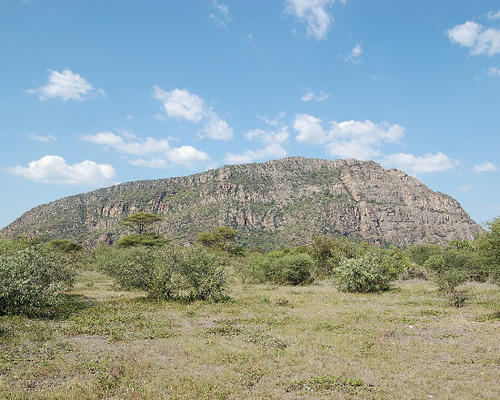Hydrological conditions and the origin of modern humans
Tsodilo Hills in Botswana
Image Credit: Joachim Huber CC BY-SA 4.0
The Tsodilo Hills in Botswana have been inhabited by humans for at least 100,000 years. The hills are located near the Pleistocene Kalahari "palaeo-wetlands", considered by some geneticists to be the area of origin of modern humans. Research into the hydrological conditions that played an important role for early Tsodilo people, their environment and their livelihoods can help to understand how modern humans evolved.
The data
Data include information on mean annual precipitation and temperature in the Kalahari and of the palaeolake Tsodilo and Landsat images for morphometric analyses. In addition, geophysical, differential GPS transects and tables with geochemical and mineralogical analyses are published.
Publication of the dataset: Geppert M, Riedel F et al (2021) https://doi.org/10.1016/j.qsa.2021.100022
Research Results
The Tsodilo Hills may have been first reached by early modern humans along the Tamacha palaeo-river, which during highstands of the Tsodilo palaeolake was its outlet into the Okavango River.
Remote sensing and sedimentological analyses have identified three such highstand periods. The lake also existed several thousand years before and after the highstands, but then without an outflow, so that the ecology changed. Since there is no lake there today, the climate in the past must have been wetter for longer periods. The availability of water was the prerequisite for the development of an early human culture.
Publication of the journal article: Geppert M, Riedel F et al (2021) https://doi.org/10.1016/j.qsa.2021.100022
Text modified after Geppert M, Riedel F et al (2021) https://doi.org/10.1016/j.qsa.2021.100022
